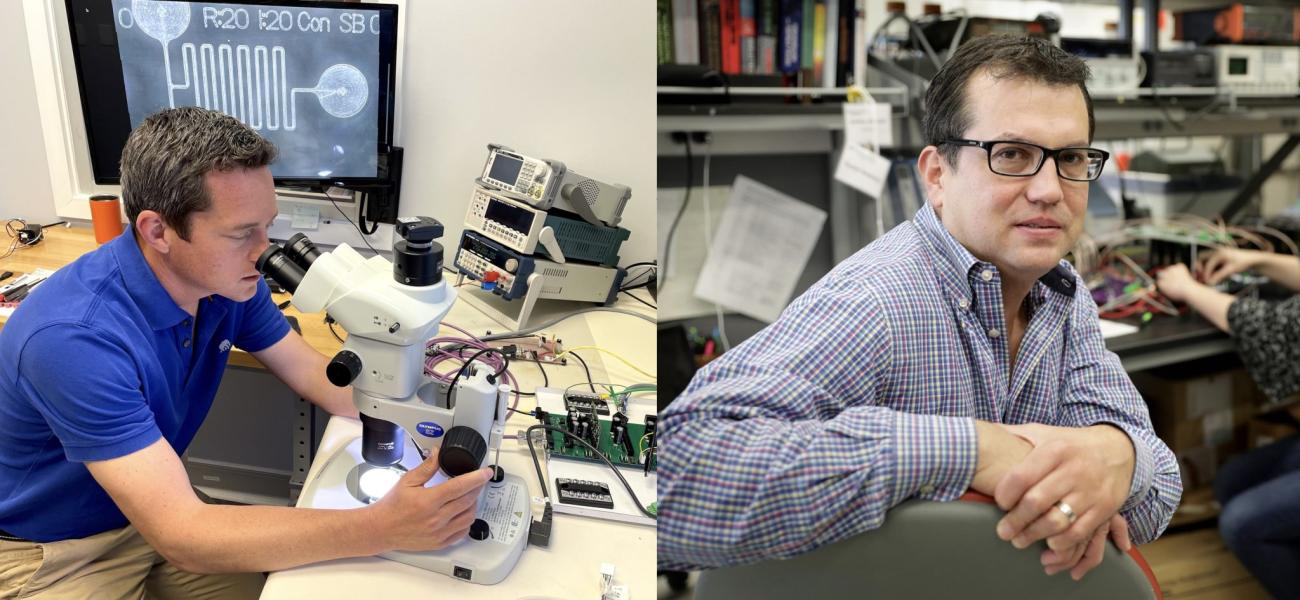The process of getting viable drugs to the commercial market can be time consuming and quite expensive. Clinical trials conducted on animals can produce mismatched and problematic results when the same therapeutics are applied to human subjects.
But the rise of the microfluidic device industry is changing how researchers assess the effectiveness of novel drugs in live environments by replicating the human body in the lab. And one Georgia Tech researcher hopes this technology can improve outcomes for brain treatment.
Rafael V. Davalos, the Margaret P. and John H. Weitnauer Jr. Chaired Professor in the Wallace H. Coulter Department of Biomedical Engineering at Georgia Tech and Emory University, is leading a team of researchers to recreate a blood-brain-barrier model using a 3D printing technology to address current limited models of the brain used to treat neurological diseases and brain cancer.
“I believe this new method to fabricate microfluidic devices will enable researchers to deepen their understanding as to how cells communicate within physiologically relevant environments that were previously unachievable,” said Davalos.
Davalos and his team is partnering with Phase Inc., a leading pioneer in 3D printing technology for organ-on-chip models, to conduct the project using a two-year $1.8 million grant from the National Institutes of Health (NIH).
“The partnership with Dr. Davalos and Georgia Tech — along with Virginia Tech and Massachusetts General Hospital — brings together an incredible team of scientists who can help usher in a new generation of microfluidics using 3D printing,” said Jeff Schultz, co-founder of Phase. “We are very excited for the potential impact this project has on propelling biotechnology.”
Organ-on-chip models expand on microfluidics—the study of the behavior of fluids through micro-channels—to develop a culture device with fluid channels containing human cells that mimics a particular bodily organ to test the efficacy and toxicity of different drugs.
The technology is remarkable in that it more realistically recreates the structures and functions of parts of the human body using living cells in a lab environment without the need for human volunteers. Phase Inc. is using 3D printing to create the models further advancing the possibilities of microfluidics.
The project’s researchers are leveraging Phase Inc. to carry out the project and support bringing the company’s 3D technology to the market.
If successful, this project can usher in new therapies for brain diseases and quickly get them to patients in need of critical treatment.
The research team includes Davalos, who will focus on testing the replication of the in vivo blood brain barrier using the 3D device; Seemantini Nadkarni, an associate professor at Harvard Medical School and Massachusetts General Hospital, who will develop a system to test the kinetics of PDMS curing during the creation of the organ-on-a-chip devices; and Amrinder Nain, a professor of mechanical engineering at Virginia Tech, will fabricate nanoporous membranes mimics for the model.
Latest BME News
Jo honored for his impact on science and mentorship
The department rises to the top in biomedical engineering programs for undergraduate education.
Commercialization program in Coulter BME announces project teams who will receive support to get their research to market.
Courses in the Wallace H. Coulter Department of Biomedical Engineering are being reformatted to incorporate AI and machine learning so students are prepared for a data-driven biotech sector.
Influenced by her mother's journey in engineering, Sriya Surapaneni hopes to inspire other young women in the field.
Coulter BME Professor Earns Tenure, Eyes Future of Innovation in Health and Medicine
The grant will fund the development of cutting-edge technology that could detect colorectal cancer through a simple breath test
The surgical support device landed Coulter BME its 4th consecutive win for the College of Engineering competition.








